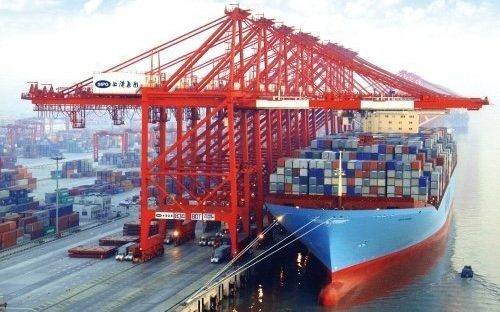China port congestion continues to roil global supply chains

With congestion at Chinese ports continuing a leading shipper body has urged lines to speed their ships up to help minimise the supply chain fallout.
Congestion at Chinese ports, primarily in Shanghai, surfaced in April and continues to this day with many liners rescheduling port calls to other terminals in the region. Other ports in China that have been hit by ships backing up include Ningbo and Qingdao.
Sunny Ho, the executive director of the Hong Kong Shippers’ Council, has hit out at liners’ “reluctance” in making up the schedule disruption seen over the past eight weeks by adjusting vessel speeds. The lines were unwilling to take the hit of higher fuel costs, Ho said in an interview with Splash today.
“When lines’ services are unreliable, shippers’ supply chains and marketing plans will all be disrupted. Some shippers will resort to longer lead times, causing more inventory and tightening of working capital.
What shippers care most is reliability and predictability, and schedule disruptions would be the service that shippers want least,” Ho said.
SIPG, Shanghai’s port body, attributed the congestion to April 1’s liner alliance reshuffle whereby the four major global liner alliances became three. Ho told Splash the effects of the liner regrouping would continue to be felt among shippers through to the fourth quarter this year.
An official at SIPG told Splash that the congestion issue has eased a little, but remains a problem with no timeframe for it passing.
Cosco Shipping said in a recent notice to clients that it estimates the congestion at Shanghai will continue for an “uncertain” period of time.
Xu Jianhua, a professor at Shanghai Maritime University, reckons that Shanghai port is now operating far above its design capacity, which has also led to the traffic problems. Xu suggested to Splash that more intra-Asia and domestic bound boxes should be handled by other nearby ports, such as Taicang on the lower reaches of the Yangtze.
An official at China Shippers Association reckoned the surge in trade volumes could also be a factor intensifying congestion at Chinese ports. According to data from China’s General Administration of Custom, in the first four months of the year, China’s total value of import and export cargoes increased year-on-year by 20.3% to RMB8.42trn.
One of the major contributing factors to congestion seen at Shanghai port has been down to bad weather. Heavy fog and rain have hit operations. This weather factor will be much less severe in summer.

Are these the same ports who collectively have 50m TEU of excess capacity according to ITF/OECD?
“China’s excess port capacity in 2013 was 50m TEU…. and this will double by 2030” – FT September 2016.
I also think that Mr Ho forgot that lowest cost is priority number 1 for the majority of shippers. If however the inventory costs and other related costs exceed the contribution needed to speed up the ships – there is a potential opportunity waiting to be explored.